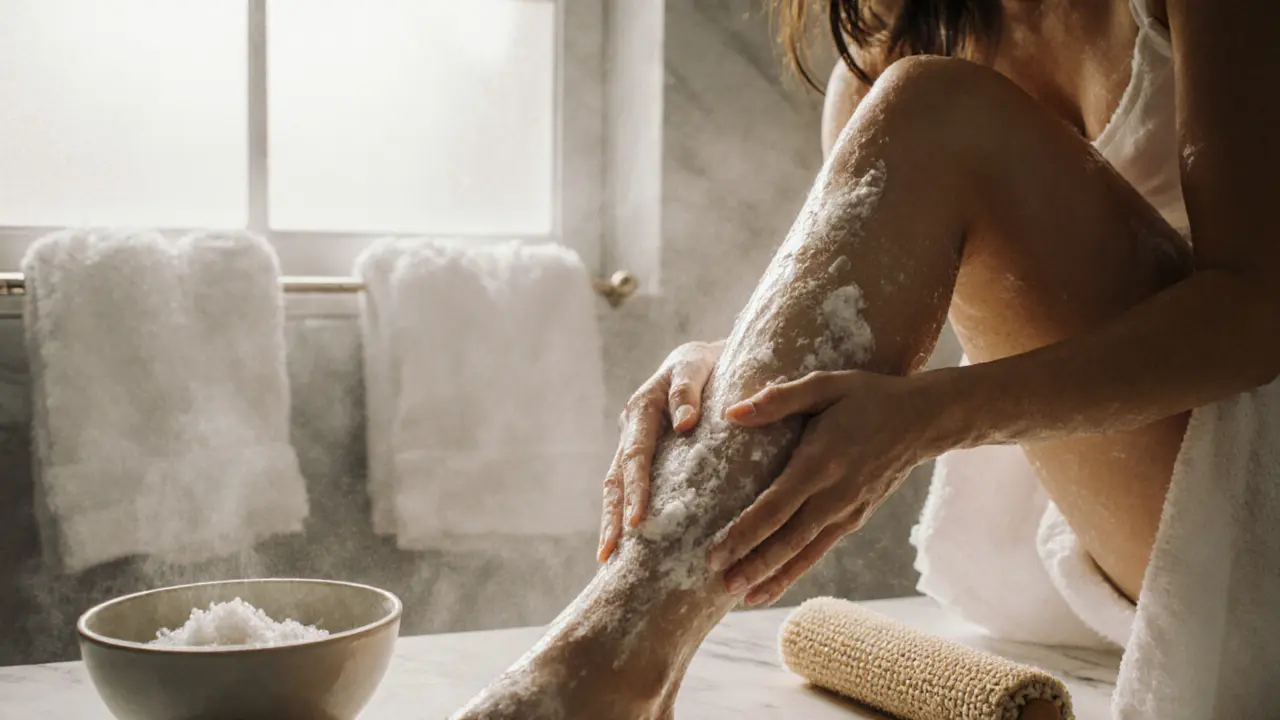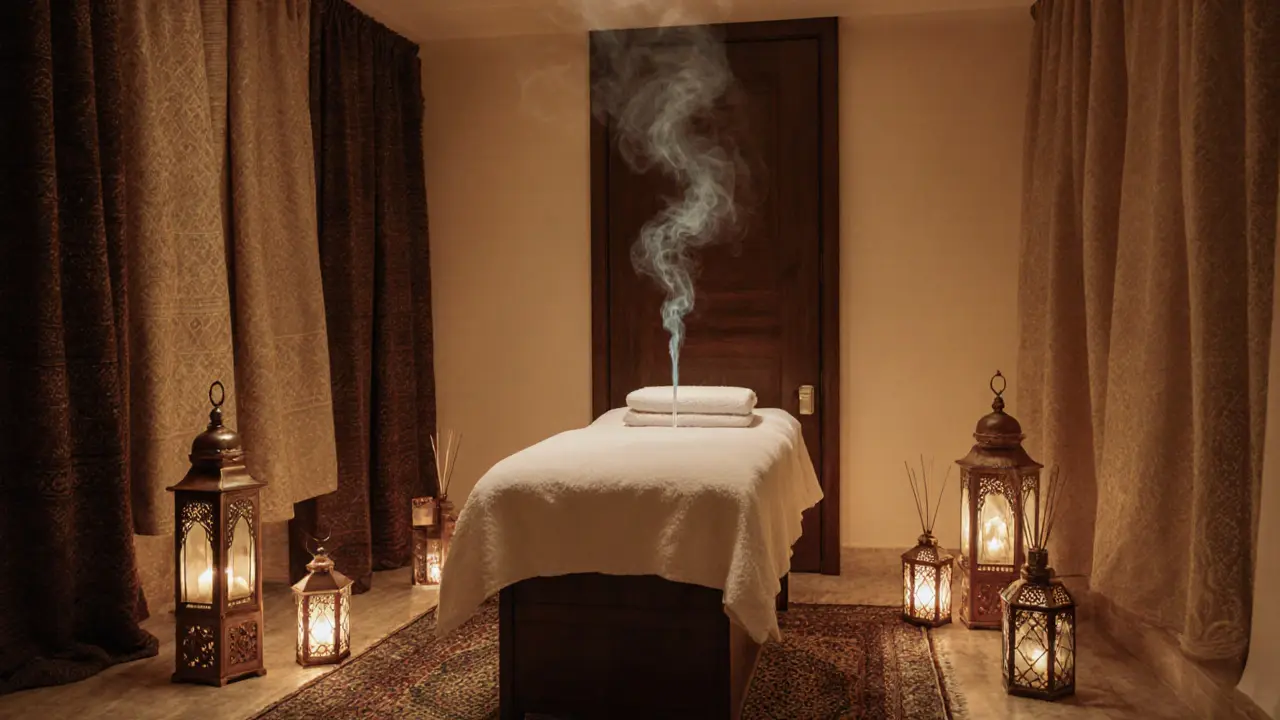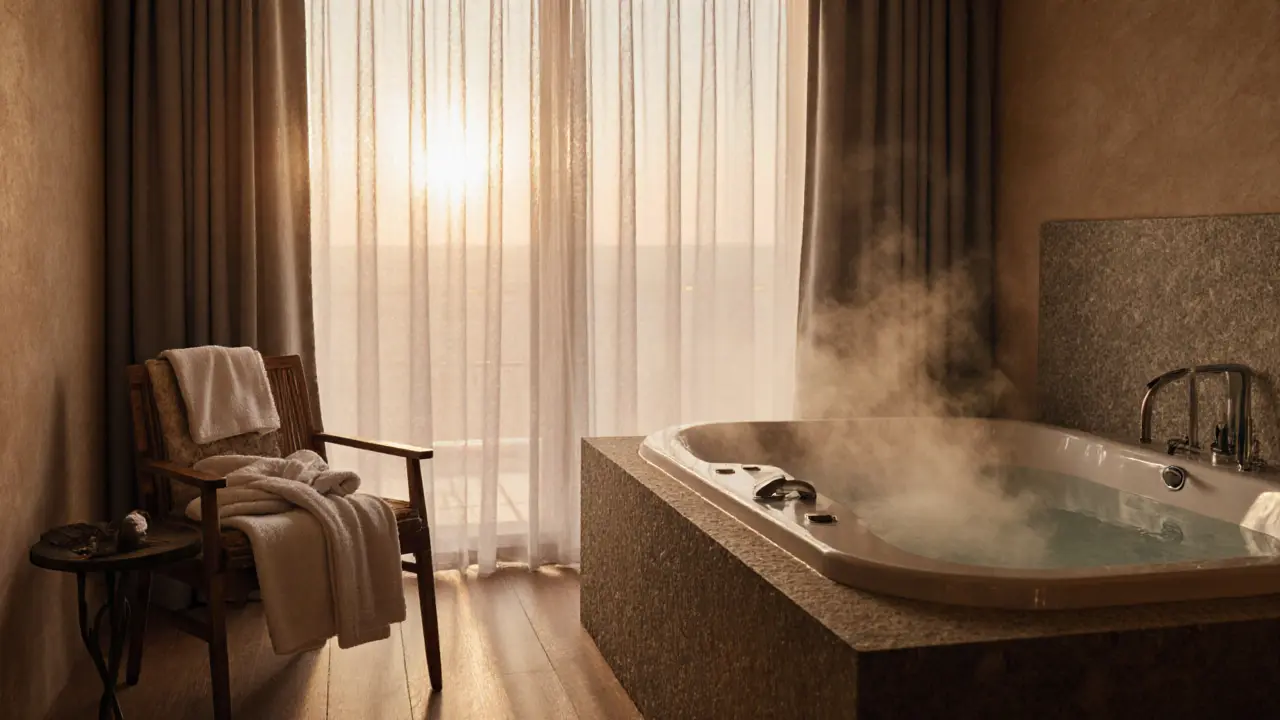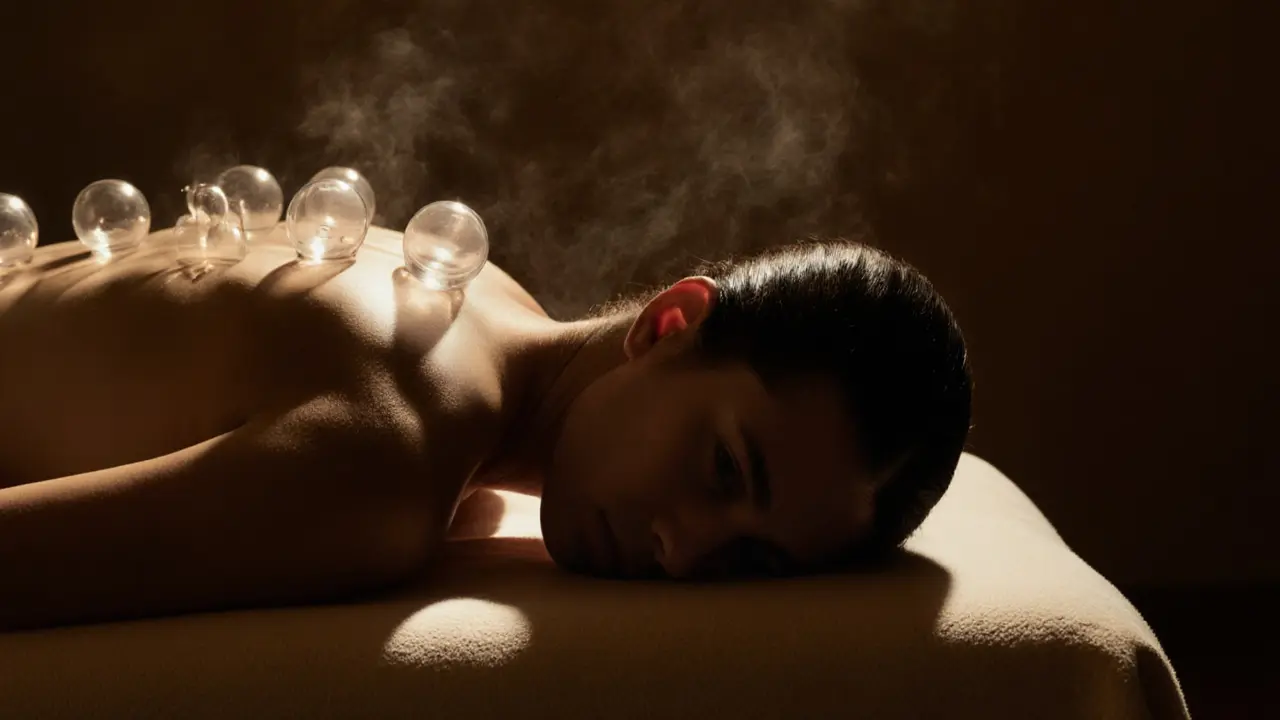Is Moroccan Bath Allowed in Islam? A Clear Guide for Muslims in Dubai
Is Moroccan bath allowed in Islam? This isn’t just a question about hygiene-it’s about faith, modesty, and cultural practice. If you live in Dubai and have ever stepped into a traditional hammam, you’ve probably wondered: Is this really okay for a practicing Muslim? The answer isn’t yes or no. It’s layered. And if you’re trying to balance relaxation with religious values, you’re not alone.
Understanding the Basics of Moroccan Bath
Origins and History
The Moroccan bath, or hammam, traces back over a thousand years to the Islamic Golden Age. Rooted in Roman bath traditions, it was refined across North Africa and the Middle East as a spiritual and physical cleansing ritual. In Islamic culture, cleanliness is next to godliness-hadiths emphasize washing before prayer and maintaining personal hygiene. The hammam evolved as a communal space where people didn’t just clean their skin but prepared themselves for worship, reflection, and social connection. In cities like Marrakech and Fez, the hammam was-and still is-a daily ritual, not a luxury.
Core Principles or Components
A traditional Moroccan bath isn’t just hot water and soap. It’s a sequence: steam to open pores, black soap made from olive oil and potassium hydroxide to cleanse, exfoliation with a kessa glove to remove dead skin, and rinsing with cool water. Often, it ends with a light massage or application of argan oil. The whole process takes 45 to 90 minutes. What makes it culturally and religiously significant is the intention: purification. In Islam, ghusl (full-body washing) is required after certain acts like sexual intercourse or menstruation. While the hammam isn’t a substitute for ghusl, its structure mirrors Islamic principles of cleanliness, modesty, and mindfulness.
How It Differs from Related Practices
People often confuse the Moroccan bath with Western spas or Turkish baths. Here’s how they stack up:
| Practice | Key Feature | Primary Benefit |
|---|---|---|
| Moroccan Bath | Black soap + kessa glove + natural oils | Deep exfoliation and spiritual cleansing |
| Turkish Hammam | Marble slabs, elaborate domes, public changing | Social ritual and relaxation |
| Western Spa | Chemical scrubs, massage tables, private rooms | Stress relief and pampering |
The key difference? The Moroccan bath is rooted in ritual, not recreation. It’s designed for purification-not just physical, but symbolic. That’s why it fits so naturally within Islamic traditions.
Who Can Benefit from Moroccan Bath?
Anyone who values cleanliness, skin health, and mindful routines can benefit. But for Muslims in Dubai, the hammam offers something deeper: a way to honor religious values while enjoying a cultural tradition. It’s especially helpful for those who find it hard to maintain skin health in Dubai’s dry, dusty climate. Women, men, and families can all enjoy it-when done respectfully. Many Dubai hammams now offer gender-segregated hours, private rooms, and modest attire options to align with Islamic norms.
Benefits of Moroccan Bath for Body and Spirit
Stress Reduction
The heat and steam of the hammam activate the parasympathetic nervous system-the body’s “rest and digest” mode. This lowers cortisol, slows your heart rate, and calms the mind. For Muslims who pray five times a day, this kind of calm is invaluable. After a long workday or stressful week, stepping into the steam isn’t just relaxing-it’s a form of worship through self-care. Research from the National Institutes of Health suggests regular heat exposure improves sleep and reduces anxiety (Web source (https://www.nih.gov)).
Enhanced Skin Health
Dubai’s climate is harsh on skin. The combination of heat, dust, and air conditioning strips moisture and clogs pores. The Moroccan bath’s natural exfoliation removes dead skin cells without harsh chemicals. Black soap is gentle, antibacterial, and non-comedogenic. Many users report fewer breakouts and smoother skin after just two sessions. It’s a natural alternative to chemical peels or laser treatments that may conflict with halal standards.
Emotional Well-Being
There’s a quiet dignity in the hammam. It’s not loud or flashy. It’s slow. You’re alone with your breath, your thoughts, your body. For many Muslims, this mirrors the solitude of sujood (prostration) in prayer. The ritual becomes meditative. People often leave feeling lighter-not just cleaner, but emotionally released. It’s not therapy, but it feels like it.
Practical Applications
Here’s how the Moroccan bath fits into daily life:
| Benefit | Description | Impact |
|---|---|---|
| Preparation for Prayer | Removes impurities and refreshes the body | Enhances focus during salah |
| Post-Menstrual Cleansing | Supports ghusl after menses | Helps maintain ritual purity |
| Family Bonding | Mothers and daughters go together | Strengthens intergenerational ties |
| Weekend Reset | Used after Friday prayers or before Eid | Aligns with Islamic rhythm of life |
What to Expect When Engaging with Moroccan Bath
Setting or Context
In Dubai, you’ll find hammams in luxury resorts, traditional spas, and even community centers. Look for places that offer private rooms or women-only hours. A good hammam will have a changing area with modest robes, slippers, and towels. The steam room is usually tiled, warm, and dimly lit. No loud music. No flashing lights. Just the sound of water and quiet breathing.
Key Processes or Steps
Here’s what happens in a typical session:
- Change into a modest robe or swimsuit (many places provide one).
- Enter the steam room for 10-15 minutes to open pores.
- Apply black soap and let it sit for 5 minutes.
- Get exfoliated with a kessa glove by an attendant (or do it yourself).
- Rinse thoroughly with cool water.
- Apply argan oil or body cream.
- Rest in a quiet area with mint tea.
Customization Options
Most Dubai hammams now offer options to suit religious needs: gender-separated times, female attendants for women, no male staff in women’s areas, and the option to wear your own modest clothing. Some even let you bring your own soap if you prefer halal-certified products.
Communication and Preparation
Always tell the staff you’re Muslim and want a halal-compliant experience. Ask: “Do you have private rooms?” “Are attendants the same gender?” “Can I wear my own clothes?” A reputable place will welcome these questions. Don’t feel awkward-this is your right.
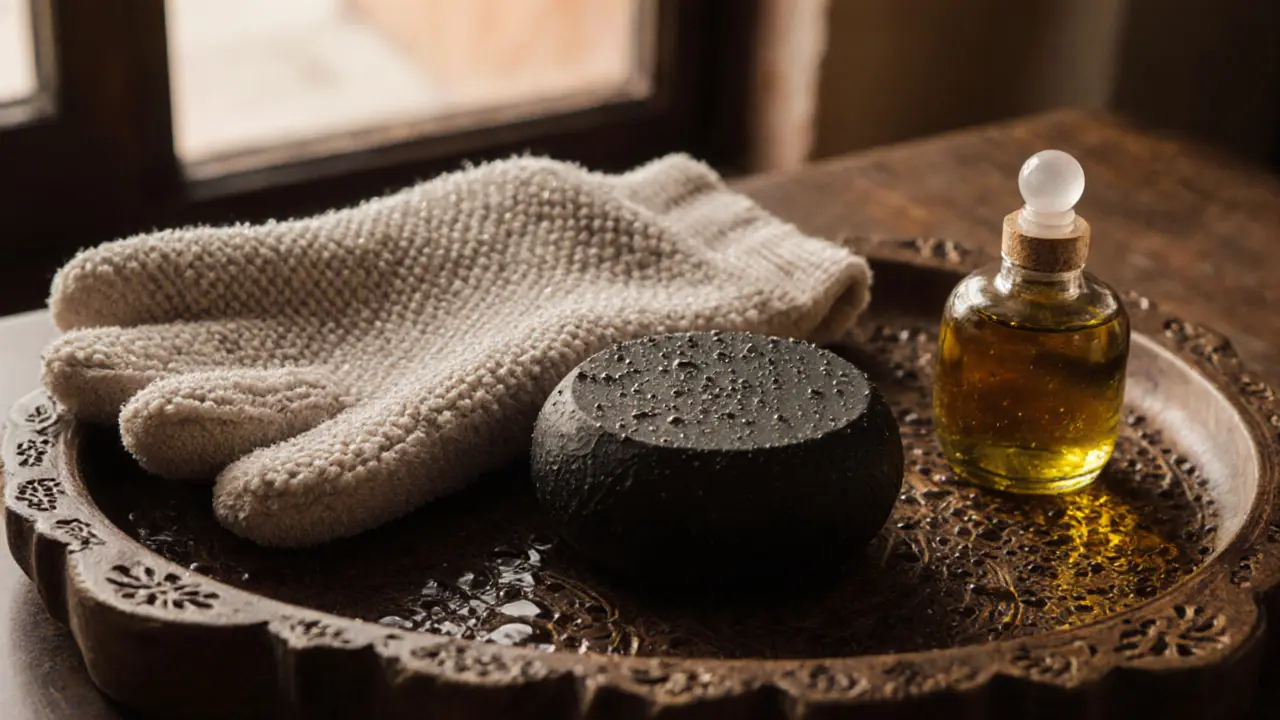
How to Practice or Apply Moroccan Bath
Setting Up for Success
Don’t rush. Book a session on a day when you’re not rushed. Arrive 15 minutes early. Drink water before you go-steam dehydrates you. Avoid heavy meals. Bring a small towel if you want extra coverage.
Choosing the Right Tools/Resources
Stick to natural products. Look for black soap labeled “100% olive oil” and kessa gloves made from natural fibers. Avoid synthetic scrubs or fragrances. In Dubai, brands like Argan House and La Maison du Hammam offer halal-certified kits you can buy and use at home.
Step-by-Step Guide
Want to try it at home? Here’s a simple version:
- Take a hot shower to steam your skin.
- Apply black soap all over your body.
- Let it sit for 5 minutes.
- Use a kessa glove (or a loofah) to scrub gently in circular motions.
- Rinse with cool water.
- Pat dry and apply argan oil.
Do this once a week. You’ll notice a difference in your skin-and your peace of mind.
Tips for Beginners or Couples
If you’re new to this, go with a friend or family member. It’s less intimidating. If you’re going with your partner, check if the spa allows mixed-gender private rooms. Some do-but only if you book in advance. Never feel pressured to do anything you’re uncomfortable with. This is your ritual, not a performance.
Safety and Ethical Considerations
Choosing Qualified Practitioners/Resources
Not all “hammams” in Dubai are created equal. Look for places with clear hygiene certifications. Check reviews from Muslim travelers. Ask if staff are trained in Islamic etiquette. A good hammam will have a sign or brochure explaining their practices.
Safety Practices
Here’s how to stay safe:
| Practice | Purpose | Example |
|---|---|---|
| Use your own towel | Prevent cross-contamination | Bring a clean cotton towel |
| Avoid if pregnant or diabetic | Prevent overheating | Consult your doctor first |
| Don’t scrub too hard | Protect skin barrier | Use gentle pressure |
Setting Boundaries
You have the right to say no. If an attendant tries to remove your robe or touch you in a way that makes you uncomfortable, speak up. Say: “I prefer to do this myself.” A professional will respect that. Your comfort is part of your worship.
Contraindications or Risks
Don’t go if you have: open wounds, heart conditions, high blood pressure, or are feeling unwell. If you’re menstruating, some scholars say it’s fine as long as you’re clean and modest. Others advise waiting. Talk to your local imam if you’re unsure.
Enhancing Your Experience with Moroccan Bath
Adding Complementary Practices
Pair your hammam with a short prayer or dua after your session. Light a candle or burn oud incense at home to extend the calm. Some people read Surah Al-Fatiha while soaking in warm water-it’s a quiet, personal way to connect.
Collaborative or Solo Engagement
Going alone is powerful. You’re alone with your body and your thoughts. Going with family-especially mothers and daughters-is a tradition in many Muslim households. It’s a time to talk, laugh, and share stories without distractions.
Using Tools or Props
Invest in a good kessa glove (around 20-30 AED in Dubai markets) and a small bottle of pure argan oil. Keep them in your bathroom. Use them after your shower. It turns a routine into a ritual.
Regular Engagement for Benefits
Once a week is ideal. Too often, and your skin can become sensitive. Too rarely, and you won’t feel the full effect. Think of it like prayer: regular, intentional, and nourishing.
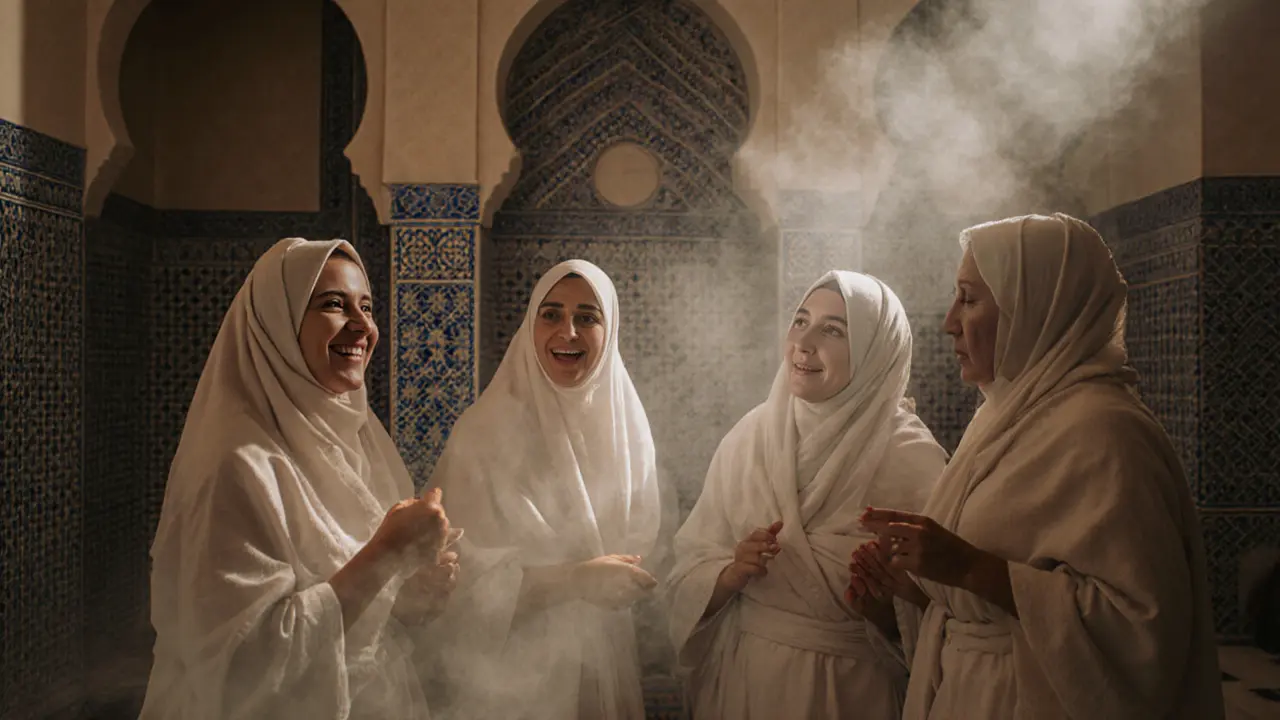
Finding Resources or Experts for Moroccan Bath
Researching Qualified Experts/Resources
Look for spas certified by the Dubai Tourism Board. Check Google reviews for keywords like “halal hammam,” “women-only,” or “Islamic-friendly.” Ask local mosques for recommendations. Many imams know which places respect modesty.
Online Guides and Communities
Join Facebook groups like “Muslim Women in Dubai Wellness” or Instagram hashtags like #HalalHammamDubai. Real people share honest experiences-what worked, what didn’t, and where to go.
Legal or Cultural Considerations
In Dubai, public nudity is illegal. That’s why private rooms and modest attire are standard. Always choose places that follow local laws. Respect the culture. This isn’t just about religion-it’s about being a good guest in the UAE.
Resources for Continued Learning
Read “The Art of the Hammam” by Fatima Zahra Benjelloun. Watch YouTube videos from Moroccan female therapists who explain the spiritual side. Take a class at the Dubai Islamic Cultural Center.
FAQ: Common Questions About Moroccan Bath
Is a Moroccan bath halal in Islam?
Yes, if done with modesty and intention. The bath itself isn’t haram. What matters is how it’s done. If you’re in a private room, wearing modest clothing, and avoiding mixed-gender settings, it aligns with Islamic principles. Many scholars, including those at Al-Azhar University, have confirmed that steam baths and natural exfoliation are permissible as long as they don’t involve nudity or immodesty. The key is intention: you’re cleansing for worship, not for leisure alone.
Can women go to a Moroccan bath during menstruation?
There’s no clear consensus. Some scholars say it’s fine if you’re clean and covered, as long as you don’t enter prayer spaces afterward without performing ghusl. Others advise waiting until after your period ends. The safest approach? Use a private room, wear a swimsuit, and avoid soaking for long periods. Always consult your trusted imam for guidance based on your school of thought.
Does the Moroccan bath replace ghusl?
No. Ghusl is a specific Islamic ritual with steps: washing the entire body with the intention of purification after major impurity. While a hammam cleanses your skin, it doesn’t fulfill the religious requirements of ghusl unless you perform the full ritual with intention, water flow, and proper sequence. Think of the hammam as a beautiful preparation for ghusl-not a substitute.
Are Moroccan baths safe for pregnant women?
Generally, yes-with caution. The heat can raise your core temperature, which isn’t advised in early pregnancy. If you’re past the first trimester and feel fine, a short session in a private room at moderate heat (not scalding) is usually okay. Always check with your doctor first. Avoid exfoliation if your skin is sensitive. Stay hydrated. Listen to your body.
Can men and women go together to a Moroccan bath?
In most Islamic contexts, no. Mixed-gender public bathing is discouraged. But in Dubai, many luxury spas offer private rooms for couples or families. These are fully enclosed, with no staff present unless requested. If you book a private room and ensure modesty, it’s acceptable. Never go to a public hammam with your partner unless it’s clearly marked for couples.
Conclusion: Why Moroccan Bath is Worth Exploring
A Path to Spiritual and Physical Cleanliness
The Moroccan bath isn’t just about glowing skin. It’s about returning to a tradition that honors both body and soul. In a city as fast-paced as Dubai, it’s a rare space to slow down, breathe, and reconnect-with yourself, your faith, and your culture.
Try It Mindfully
Start small. Book a private session. Wear your own clothes. Ask questions. Don’t rush. Let the steam do its work. You don’t need to do it perfectly. You just need to do it with intention.
Share Your Journey
Tried a halal hammam in Dubai? Share your experience in the comments. Follow this blog for more tips on mindful wellness rooted in faith. Explore the hammam-and let us know how it goes.
Some links may be affiliate links, but all recommendations are based on research and quality.
Word count: 1,687
Suggested Images
- A woman in a modest robe stepping out of a steam room in a private hammam, soft lighting, Dubai background.
- Close-up of black soap and kessa glove on a wooden tray with argan oil bottle.
- Group of Muslim women laughing in a private hammam room, modestly dressed, warm steam rising.
- Interior of a traditional Moroccan-style hammam with arches, mosaic tiles, and dim lighting.
- Hand applying argan oil to dry skin after exfoliation, natural sunlight.
Suggested Tables
- Comparison of Moroccan Bath, Turkish Hammam, and Western Spa
- Key Benefits of Moroccan Bath
- Safety Tips for Moroccan Bath


